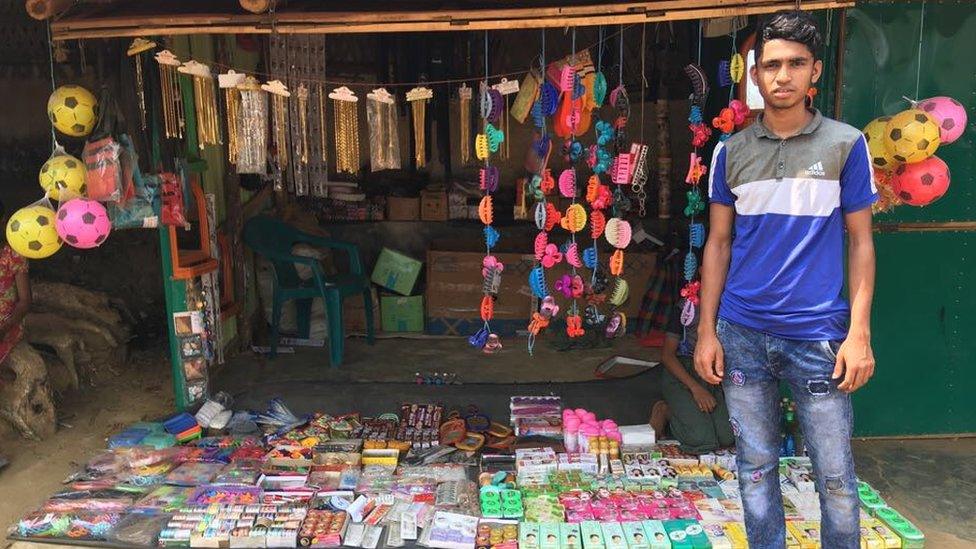Cardiff aid worker sees Rohingya camp monsoon 'devastation'
- Published
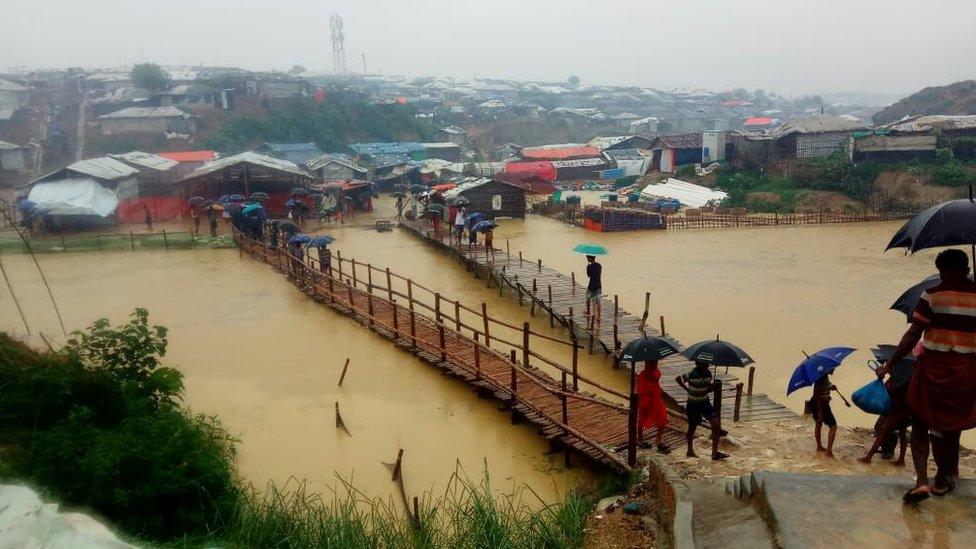
Floodwater runs through the camp
About 900,000 refugees have travelled from Myanmar to neighbouring Bangladesh since August 2017.
They are Rohingya Muslims who said they have escaped persecution in their home country and now live in shelters at the world's largest and most densely populated refugee settlement.
Despite fleeing the violence to a safer haven, their new homes have faced another threat - the cyclone and monsoon season which has struck the flood-prone valleys.
Vicky Goodban, from Cardiff, has been working out there helping those in need following last week's late arrival of the torrential weather.
I struggle to explain rain like this. It goes on and on, and the wind howls and the sea surges relentlessly. It didn't let up for over 30 hours.
In three days southern Bangladesh got as much rain as the whole of a normal June in the country.
This is weather the Rohingya refugees are well versed in - except here they have none of their normal coping mechanisms to hand.
Watch: Drone footage from the DEC shows the extent of sprawling camps on the Bangladesh border
A generally rural people, living in small villages, with vegetation and hills, they're now forced to live in a cramped semi-urban environment with no real options for escape.
I visited the largest camp in my first week, and the scale of it is breathtaking. Not only is it the biggest refugee camp on earth, it is the most cramped: it fails on almost every humanitarian standard there is for space and resources.
When I first visited the megacamp it was dusty and dry. There is no shade there and it is the fasting month of Ramadan, yet in the midday sun men were working tirelessly to rebuild the dirt tracks - at risk at the first sign of rain - with brick.
Kids were everywhere - only a quarter of children in the camp get any kind of education, with much of it informal. The refugees' situation is dire in so many respects, yet it's also amazing what's been achieved.

I'm in the advocacy team at Oxfam and my job is to work on policy. How can the aid agencies, the United Nations and governments work better together to make the Rohingya refugees' lives better?
We are here to serve people who've had an almost incomprehensible scale of devastation brought on them.
The crisis is also affecting local Bangladeshis too. I met women from nearby villages who mentioned the scarcity of firewood since the Rohingya arrived.
They relied on the forests for fuel, but now they have been demolished to make space for the camps, and as much as five football pitches are being cut down every day to provide fuel for cooking.
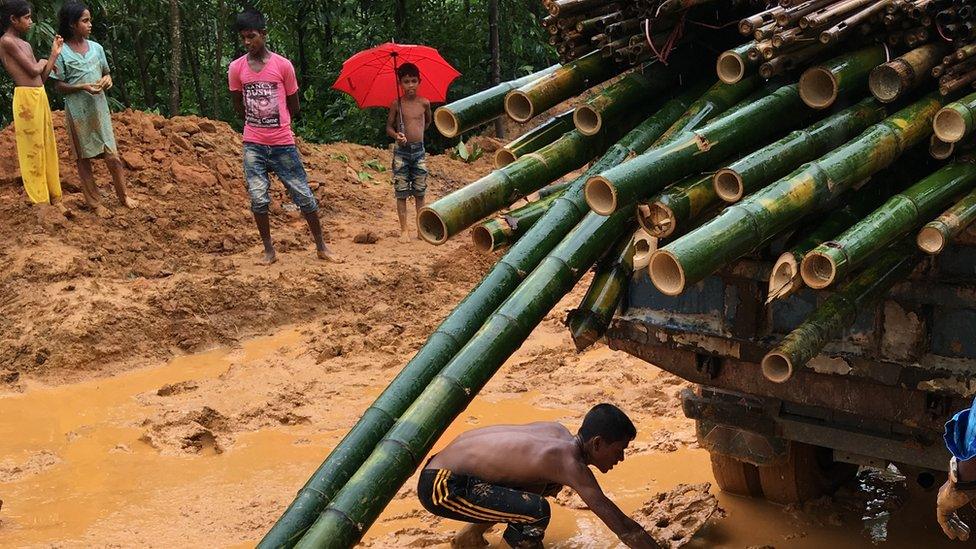
A truck tries to get through the mud caused by the monsoon
And all these problems existed before the rains hammered down.
The state of the camps this week is something to behold - streams have become rivers; torrents of water have burst carefully constructed dams; paths and roads have become treacherous.
Landslides and erosion of the fragile hillsides have forced families to relocate to emergency shelters on safer ground, and so far at least one life has been lost.
In the face of this sort of devastation, it's hard to imagine how it could get any worse, but the teams of aid staff and refugees here are braced for further deterioration.
Refugees are working tirelessly to fortify their homes and to keep the weather at bay, and their individual and collective resilience will be sorely tested.
- Published6 May 2018
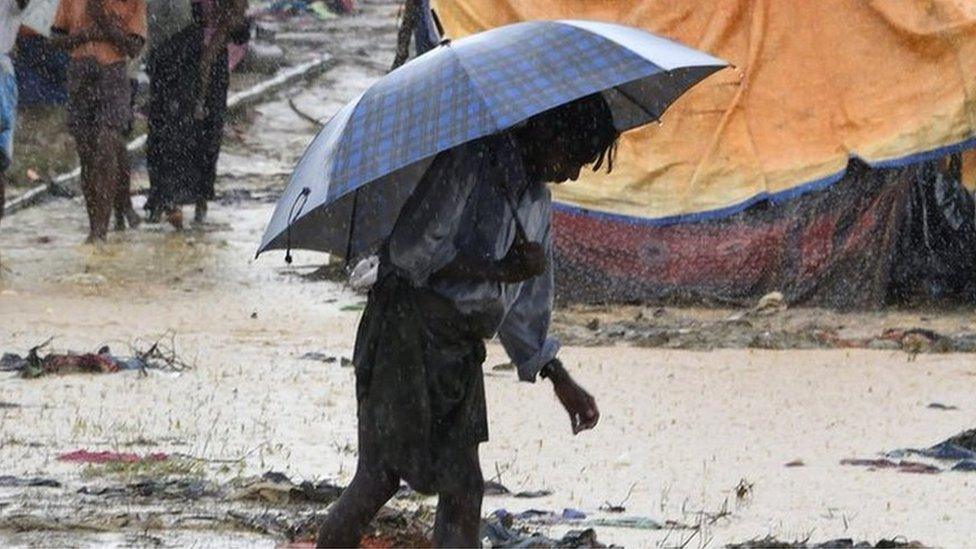
- Published30 March 2018
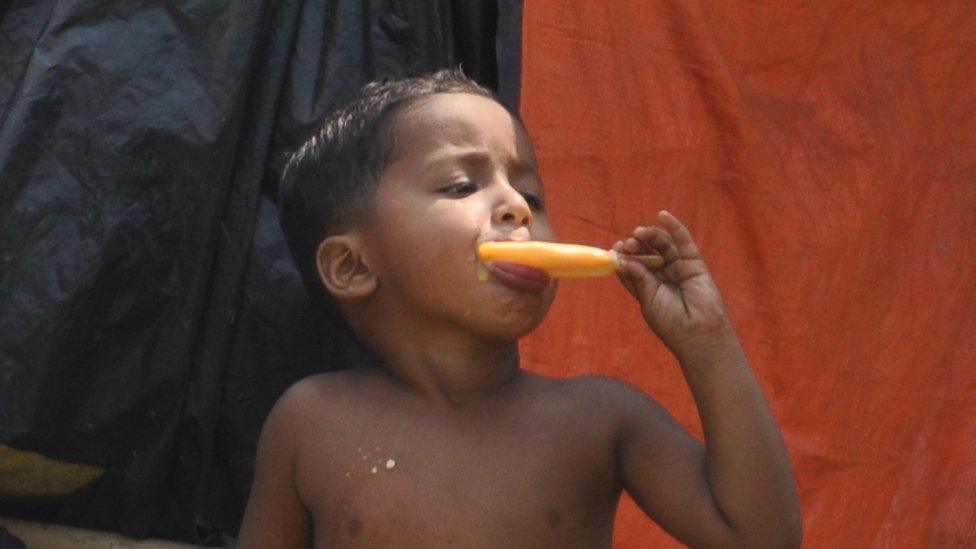
- Published13 March 2018
